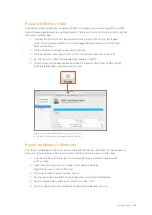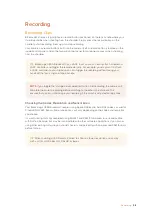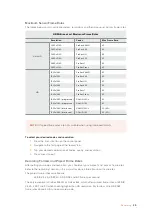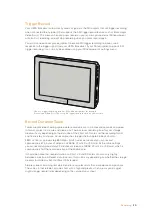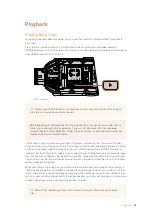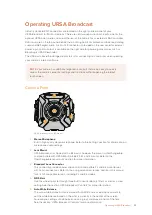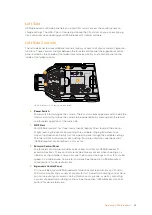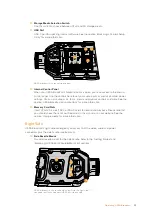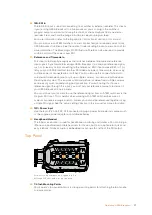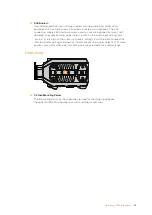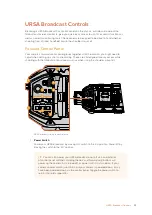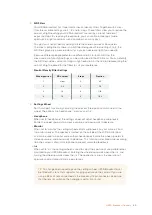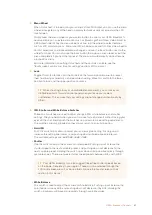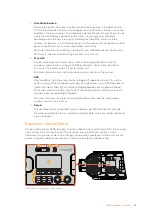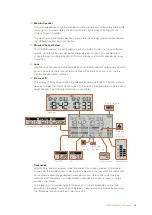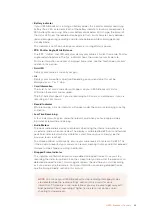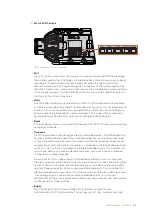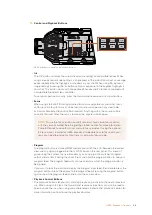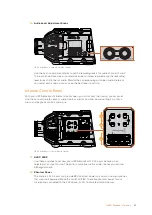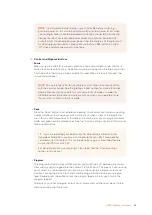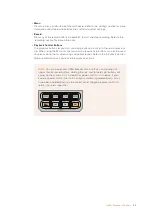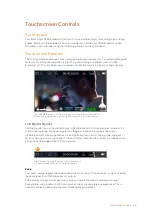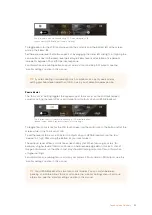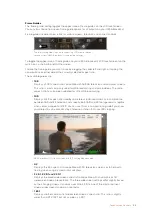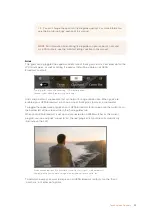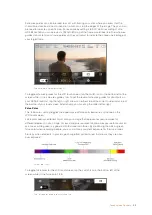
2
ND Filters
Your URSA Broadcast has three internal neutral density filters. Together with a clear
filter, the available settings are ‘2,’ ‘4’ and ‘6’ stops. These filters allow you to reduce the
amount of light reaching your URSA Broadcast's sensor by a preset number of
exposure 'stops'. By reducing the exposure, you can continue shooting at wide
apertures in bright conditions such as outdoors on sunny days.
To adjust your neutral density setting, rotate the wheel upwards or downwards.
The 'clear' setting means there is no ND filter being used. From settings 2 to 4, the
ND filters gradually increase in density so you can decrease light if you need to.
Because different people prefer to use different terms for each ND filter, the
measurement of your ND settings can be customized in the LCD menu. You can identify
the ND filter number, amount of stops in light reduction, or the fraction representing the
amount of light reduced for the filters to suit your preference.
Neutral Density Filter Settings
Wheel position
ND number
Stops
Fraction
1
clear
0
all
2
0.6
2
1/4
3
1.2
4
1/16
4
1.8
6
1/64
3
Settings Wheel
Set this wheel's function by adjusting the adjacent three position switch next to the
wheel. The options are ‘headphone,’ ‘monitor’ and 'iris'.
Headphone
When set to 'headphone', the settings wheel will adjust headphone audio levels.
Rotate the wheel upwards to increase volume, and downwards to decrease.
Monitor
When set to 'monitor', the settings wheel adjusts audio levels on your camera's built
in monitor speaker. The speaker is located on the outside of the LCD monitor door
and can be used to monitor audio without headphones. Rotate the wheel upwards to
increase volume, and downwards to decrease. This function is disabled while recording
from the camera's internal microphone to prevent unwanted feedback.
Iris
When set to 'iris', the settings wheel is used to adjust the aperture of compatible lenses
mounted to your URSA Broadcast. Rotating the wheel downwards opens the iris, and
turning the wheel upwards closes the iris. These directions mimic the operation of
aperture on adjustable still and cinema lenses.
TIP
To change aperture settings via the settings wheel, URSA Broadcast must
be fitted with a lens that supports changing aperture via the camera. If you are
using a B4 or PL lens connected via the broadcast 12 pin connector, make sure
that the lens iris switch on the handgrip is set to ‘A’ or 'auto'.
40
URSA Broadcast Controls

